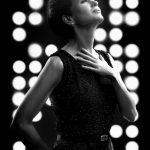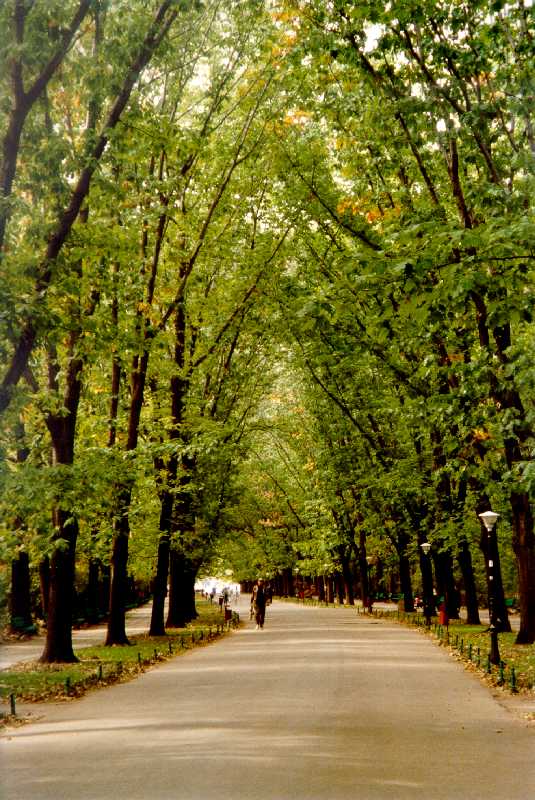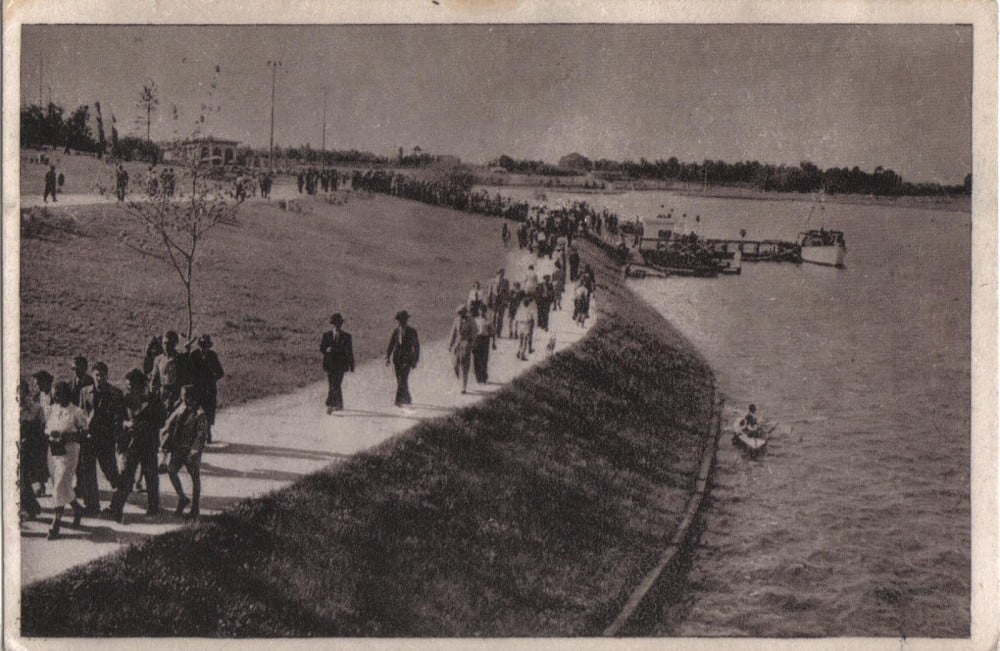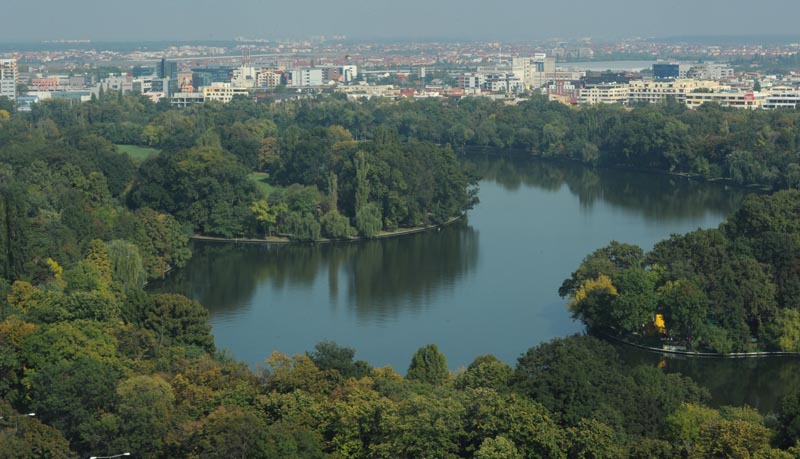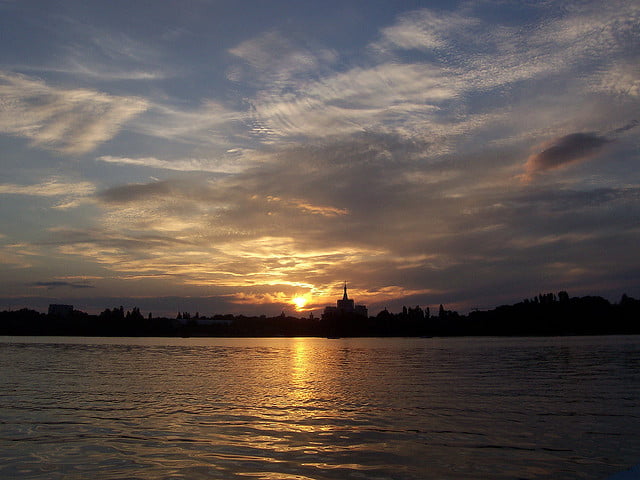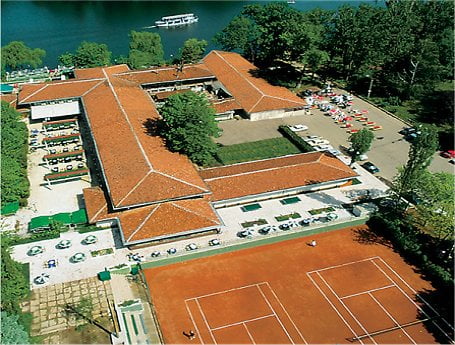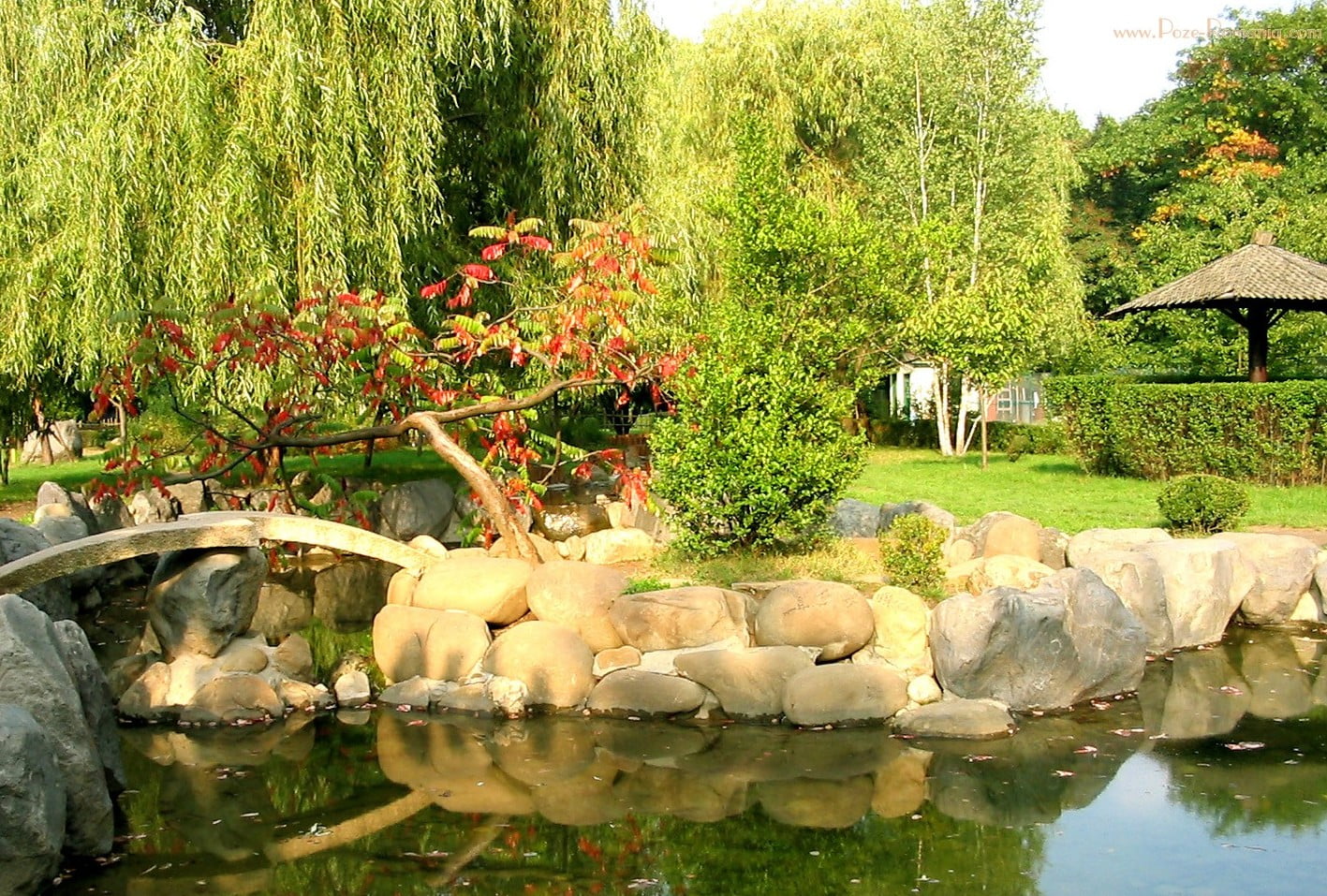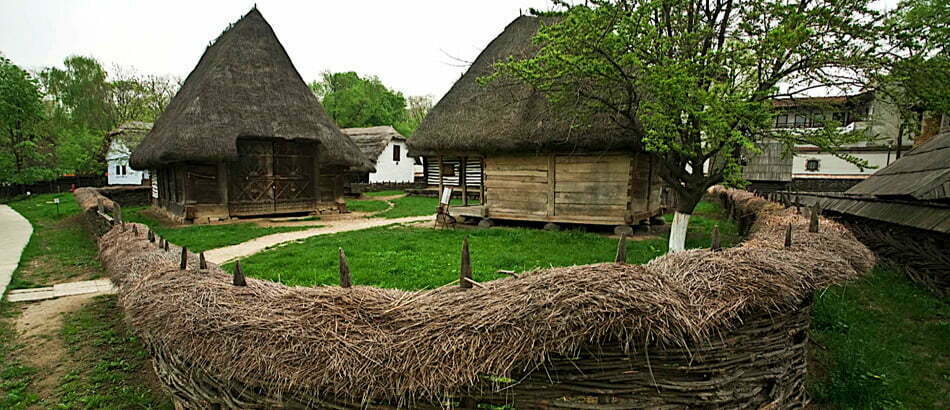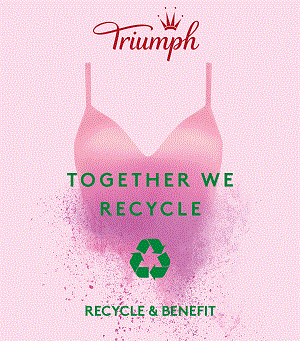Ca nou-venită în Bucureşti, a trebuit să intru în vorbă cu români care, invariabil, mă întrebau: „Îţi place Bucureştiul?”. Când răspundeam cu entuziasm „Iubesc Bucureştiul!” mă loveam instantaneu de o a doua întrebare: „De ce îl iubeşti?” Intensitatea acelor momente nu lasă loc de falsă modestie.
Când le răspund: „iubesc parcurile din oraş!”, se relaxează imediat, zâmbesc şi spun „da, da”. E un răspuns sincer pe care îl dau ei pentru o afirmație cu care sunt de acord. Sunt o mulţime de parcuri de tot felul în Bucureşti, care îşi unesc pe ici şi colo suprafeţele neregulate, ca nişte degete întinse. Eu le consider speciale pentru că sunt pline de flori, cafenele în aer liber, sculpturi şi bănci, prea multe ca să le poţi număra. Aceste parcuri nu sunt locuri de odihnă pentru oamenii fără adăpost şi nici nu arată ca un decor rece de oraş, ci sunt un sanctuar în care poţi să plimbi copilul, să meditezi sau să te joci. De la uriaşul lac din Herăstrău şi până la fântânile elegante din parcurile mici, toate sunt orânduite cu grijă să te atragă în mreje şi să te țină acolo.
 Spre sfârşitul perioadei comuniste, dictatorul Ceauşescu a dărâmat case şi magazine și i-a mutat pe locatari în apartamente noi la bloc, lipsite de elemente decorative şi, cu doar câteva excepţii, fără detalii distinctive. Apartamentele erau un loc în care oamenii dormeau, mâncau şi nimic mai mult. Prin urmare, parcurile din oraş au cunoscut o dezvoltare rar întâlnită în alte locuri din lume. Erau spaţii deschise, în care oamenii puteau să se simtă liberi şi să se vadă cu prietenii. Tineri sau bătrâni puteau să-şi întâlnească dragostea şi să vorbească fără teamă. Aceste condiții au avut un rol important în a conserva aceste parcuri şi a le face să devină atât de captivante.
Spre sfârşitul perioadei comuniste, dictatorul Ceauşescu a dărâmat case şi magazine și i-a mutat pe locatari în apartamente noi la bloc, lipsite de elemente decorative şi, cu doar câteva excepţii, fără detalii distinctive. Apartamentele erau un loc în care oamenii dormeau, mâncau şi nimic mai mult. Prin urmare, parcurile din oraş au cunoscut o dezvoltare rar întâlnită în alte locuri din lume. Erau spaţii deschise, în care oamenii puteau să se simtă liberi şi să se vadă cu prietenii. Tineri sau bătrâni puteau să-şi întâlnească dragostea şi să vorbească fără teamă. Aceste condiții au avut un rol important în a conserva aceste parcuri şi a le face să devină atât de captivante.
Cel mai mare parc din Bucureşti, Herăstrău, e la câteva străzi distanţă de blocul meu. La început îmi părea haotic, cu toate potecile sale ducând în toate direcţiile. De fapt, este atât de mare, încât majoritatea hărţilor Bucureştiului nu cuprind jumătatatea de parc de după ambasada Chinei şi o lasă neexplorată de turistul obişnuit. Istoria spune că dimensiunea impresionantă a parcului Herăstrău e rezultatul unei amplasări fericite la întretăierea dintre o pădure şi o mlaştină care erau deja locuri destinate activităţilor în aer liber în secolele anterioare construirii lui. Plimbările în jurul lacului le reconstituie astăzi pe cele de la 1800.
În hărţile care se găsesc de cumpărat la chioşcurile de ziare din parc scrie că parcul de 160 de hectare din zilele noastre e rezultatul viziunii a şase arhitecţi iscusiţi. Pe la jumătatea anilor ’30, doi români au desenat schiţa parcului, amplasându-l în jurul unui lac creat printr-o înşiruire de baraje şi ecluze. Interesant este că mecanismele din lemn ale ecluzelor originale sunt păstrate şi astăzi în cutii de sticlă, în spatele structurii moderne. Spre sfârşitul anilor ’30, un al treilea arhitect a desenat reţeaua întortocheată de alei şi apoi un al patrulea a umplut spaţiile goale cu schiţele sale de peisaj deosebite. Rezultatul a fost mult-iubita „insulă a trandafirilor”, apogeul carierei sale. Ultimii doi arhitecţi şi-au concentrat eforturile asupra a ceea ce se poate face pe suprafaţa parcului, considerând că Herăstrăul poate să susţină clădiri destinate petrecerii timpului liber şi terenuri pentru relaxare deopotrivă. Au unit cele două puncte de interes şi i-au oferit parcului caracterul unic. Elementele care alcătuiesc parcul se îmbină cu gust şi totul curge lin de la un capăt al său la celălalt. E greu de crezut că fiecare plantă şi fiecare teren de joacă a fost pus acolo intenţionat, oricât de haotice ne par astăzi a fi, dar chiar așa a fost.
Interesant este că, deşi parcul de acum a fost construit în 1936, viziunea arhitecturală nu a fost dusă la finalizare până în 1951. Pentru a ţine pasul cu vremurile, a primit numele după Stalin, o statuie a conducătorului sovietic întâmpinându-i pe vizitatori din locul în care este astăzi Piaţa Charles de Gaulle. Înainte de Stalin, parcul a fost numit după Carol al II-lea. La sfârşitul anilor ’60, Stalin nu mai era la conducere, aşa că parcul a fost cunoscut de atunci înainte drept Herăstrău, luând numele lacului. Aproape tot ce vedeţi astăzi există acolo de 60 de ani, dar parcul a căpătat un suflu nou în ultimul deceniu, la fel şi frumoasele cartiere care îl înconjoară.
Dimensiunea parcului e copleşitoare pentru un nou-venit şi la început m-am temut şi eu că n-o să mai găsesc drumul spre casă după o plimbare mai lungă. De câteva ori chiar m-am rătăcit. Atunci am decis că insula circulară din mijlocul lacului avea să îmi servească drept busolă. E o insulă micuţă, care le este destinaţie barcagiilor, şi se vede din partea de centru nord-est a lacului, acolo unde parcul e cel mai întins şi cel mai aproape de apartamentul meu. E greu să fii sigur că vei ajunge unde trebuie, pentru că marginile lacului par să urmeze cursul apei care străbate parcul. Adâncimea şi întinderea lacului depind de umplerea periodică a bazinului cu apa care trece prin baraje şi ecluze. Urmarea este aceea că o mare parte din lacul Herăstrău se continuă prin câteva peninsule neregulate şi podeţe, care sunt o încântare pentru privitori. Oricum ar fi, modul în care este dispus îţi limitează vederea în aşa fel încât, stând pe mal, poţi să vezi o mare sau o mică parte din lac, dar niciodată pe tot.
Acest lucru îi poate surprinde pe plimbăreţii “debutanți”, care sunt induşi în eroare şi cred că mai au puţin şi ajung la capătul aleii, când de fapt sunt la jumătatea lacului.
Aleile spaţioase de lângă apă, cu salcii şi conifere, au o lungime totală de aproape 6 kilometri şi jumătate şi, deşi sunt în mare parte line, îți pot pune probleme la început. Într-o zi aglomerată, pe alee îşi fac loc biciclişti care merg în viteză, oameni care aleargă şi pescari cu undiţe lungi care îşi pregătesc momeala. Dar au loc cu toţii, pentru că aleea este spaţioasă şi pavată, cu piste de biciclişti trasate, deşi poate nu în mod obligatoriu respectate de pietoni. Aceste alei te duc într-o călătorie către zonele de distracţie pentru adulţi, copii şi familii, o zonă vastă, naturală, pentru relaxare.
Pe prima porțiune, aproape de insulă, e un loc destinat adulţilor, cu cluburi de noapte şi restaurante, un patinoar deschis iarna şi terase în aer liber vara. E de ajuns să deschizi ferestrele la ora 4 dimineaţa şi să auzi vibrațiile muzicii ca să îţi dai seama unde te afli. De aici începe plimbarea. Un peisaj în schimbare, care se remodelează, reconstruieşte şi redenumeşte, pe care este plăcut să îl studiezi, văzând cum ideile creativilor proprietari sunt menite să le facă pe plac sponsorilor. Fiecare sezon aduce cu sine o nouă privelişte. E minunat că ne putem plimba la doar câteva străzi distanţă de casă şi să vedem apusul soarelui la orizont cu o carafă de vin românesc în faţă.
Dacă alegi să mergi în loc să privești pierdut în zare la întinderea de lac sau la cuplurile care parcurg oraşul braţ la braţ, poţi să urmezi un traseu circular spre un loc de joacă pentru copii, care are în centru o roată imensă. Trei alei largi şi drepte îi îmbie pe copii să se joace sub supravegherea atentă a părinţilor. Zonele cu iarbă sunt delimitate de tufişuri plantate în forme de labirint, de sculpturi care surprind esenţa copilăriei şi de rânduri de trandafiri. Aceste grădini-bulevarde sunt pline mereu de copii care se dau cu rolele, merg pe bicicletă sau sunt plimbați cu căruţul de părinţii lor. Roata cea mare este înconjurată şi ea de o varietate de echipamente de joacă mai vechi şi mai noi, de un mic foişor cu biciclete şi carturi și de chioșcuri la care se vând jucării şi cărţi. Plimbându-te prin această zonă ai un sentiment de inocenţă, de întoarcere la vremurile trăite alături de părinţi sau bunici.
Copiii mei nu sunt în Bucureşti, aşa că uitându-mă la ceilalți mi se face instantaneu dor de ei. Am trei copii, care sunt deja mari şi trăiesc în Statele Unite. Pentru că nu vreau ca gardienii să se uite urât la mine dacă mă pierd privind copiii care se joacă, fac popasuri la restaurantul şi hotelul Herăstrău, din apropiere. Hotelul Herăstrău e unul de trei stele, dar cred că motivul este acela că nu a fost schimbat în timp şi nici exteriorul său cald şi primitor nu a fost distrus. Un cocktail la apusul soarelui pe terasa hotelului e o experienţă de cinci, nu trei stele, mai ales după o zi activă. Cât despre restul zonei de distracţie, mai bine de 12 terenuri de tenis pe zgură şi iarbă se întrezăresc printre copacii de lângă hotel şi lac şi, dacă asculţi cu atenţie, poţi auzi pe fundal pocnetele fine ale mingilor de tenis. În plus, sunt căsuţe transformate în cluburi de sporturi nautice care aşteaptă cuminţi explozia de mișcare pe care o aduce cu sine vremea călduroasă. Câteodată, poți auzi voci şi muzică din spatele uşilor închise, unde angajații clubului pregătesc bărcile pentru vară. Şi asta mă face să îmi fie dor de fiecare dată de cluburile de navigaţie de acasă.
Zona neamenajată care începe după parcul copiilor este una cu verdeață şi nimic mai mult – fără cafenele, fără vânzători. Faptul că nu poți cumpăra de mâncare și că nu sunt foarte multe bănci e o surpriză pentru vizitatorii care vin pentru prima dată aici şi care au impresia că această parte din plimbare durează foarte puțin. Aici poți să mergi în linişte, să îţi goleşti mintea şi eventual să te urci într-un trenuleţ care te duce de cealaltă parte a lacului, ocupată aproape în intregime de Clubul Diplomaţilor, unde e un teren de golf cu şase găuri. Acestă porțiune din parc e a doua în topul zonelor mele preferate, pentru că este ca o întoarcere în timp în anii ’20, perioada în care a fost construit. Pe site-ul lor oficial scrie că a fost singurul teren de golf care a supraviețuit în vremea comunismului şi că avea la început 18 găuri, dar că au rămas doar 6 în timp. Deşi terenul a fost micşorat, clubul veghează semeţ de pe o parte a dealului. Pereţi albi, înalţi, îl separă de verdele înconjurător, străpuns doar de o verandă din lemn negru care ajunge până la lac.
Acoperişul lui de şindrilă, cu streşini sculptate, cuprinde toată treimea superioară a clădirii şi liniile sale parcă alunecă spre terenul de golf de dedesubt. Aici parcă se îmbină elementele de arhitectură, intriga lumii politice din trecut şi impresia de putere a anilor de atunci. Într-adevăr, ai putea filma Marele Gatsby în acest loc, chiar fără să ai nevoie de actori. Jucătorii de golf, îmbrăcaţi în haine specifice şi cărând după ei crosele de golf sunt într-un contrast flagrant cu maşinuţele de golf moderne. Clubul Diplomaţilor e un loc în care doamnele şi domnii se pot juca.
Pe măsură ce cărarea se pierde după terenul de golf şi nu mai stai cu frica de a putea fi lovit de o minge, locurile din jur te readuc în sânul naturii. Aici e teritoriul amuzantelor şi prietenoaselor veveriţe negre, cu urechi de iepure. Țopăie între alee și copaci, adună alune şi se opresc doar ca să stea la poze şi să se uite la oamenii care trec pe lângă ele.
Tocmai când ai avea mai mare nevoie de apă sau de odihnă, crengile dese încep să se rărească. Intri în zona destinată familiştilor. Aici, activitatea e intensă. Sunt şiruri de bărcuţe roşu aprins şi albastre de închiriat, cuşti cu bile săltăreţe şi case de bilete de la care poţi să cumperi un loc pentru un tur al lacului. Sunt vânzători peste tot, cu o ofertă bogată de floricele, porumb fiert, îngheţată şi alte delicatese româneşti. Dacă o băutură răcoritoare v-ar mai putea tăia setea vara, atunci o cană de vin fiert e o alegere perfectă toamna sau iarna. Preţurile sunt foarte mici comparativ cu cele din vest. Tot acolo e şi o structură de tip sală de sport construită într-un mall cu magazine mici (acolo îmi modfic hainele) şi vizavi (amuzant, nu-i așa?) e Hard Rock Café, ornată cu logo-urile Coca-Cola şi Pepsi. Cafeneaua asta e cel mai populat loc în timpul verii.
E normal ca aceasta să fie cea mai aglomerată zonă din parc, cu toate cluburile sale de noapte, restaurantele şi galeriile de artă cu acces gratuit. Priveliştea e copleştioare (oare cum au plantat totul?), cu flori care curg în cascadă peste alte flori preț de zeci sau sute de metri neîntrerupți. Peste tot sunt sculpturi, inclusiv cea a reprezentându-l pe Charles de Gaulle, deseori ironizat pentru felul în care arată. Multe dintre statui sunt ale unor români faimoşi, dar sunt atât de multe încât îi veţi găsi printre ele şi pe Beethoven, Da Vinci sau Mark Twain. Plus că, dacă sunteţi atenţi, veţi identifica şi locul memorial Michael Jackson. Fântânile sunt funcționale şi, mergând în lungul lor, privirea și pașii urmează drumul între lac și intrarea în parc. În aprilie, culorile sunt minunate în orice direcţie ai privi, mai ales dacă treci pe sub cireşii în floare din Grădina Japoneză.
În zona aceasta din Piaţa Charles de Gaulle se întâmplă mai multe decât poți să numeri pe degete: un teatru în aer liber, un teren de minigolf, un parc pentru role şi skateboard, locuri de fitness, tenis de masă, un trenuleţ pentru copii, un spațiu pentru închiriere de biciclete, sunt păuni, raţe şi lebede negre. De curând a fost construit şi un acvariu şi chiar şi o zonă à la anii ’60, cu muzică în aer liber şi oameni care stau aşezaţi pe saci de bile, în iarbă. E aproape imposibil să descriu în detaliu ce se întâmplă în această zonă plină de oameni din parc. Expresia mea preferată, pe care am auzit-o de la părinţi care ies la plimbare cu copiii este: „mai târziu”. Asta le spun puștilor care ar vrea să le facă pe toate odată, dar nu au cum.
Apoi, cireaşa de pe tort, parcul este păzit de turlele bisericilor din Muzeul Satului. Multă vreme vedeam, stând de pe insula trandafirilor, turle iţindu-se printre copaci. Inițial nu ştiam ce sunt. Treceam, cu gândul aiurea, pe podul de piatră care duce la destinaţia mea preferată, insula trandafirilor, apoi printre trandafirii fabuloşi care se întind pe o suprafaţă de mărimea unui teren de fotbal, cu capete uriaşe din bronz (care, am aflat mai târziu, le aparţin fondatorilor Uniunii Europene) în centru.
Asta până într-o zi de toamnă. Ninsese pentru prima dată în acel an, iar eu şi soţul meu am descoperit întâmplător intrarea în muzeu de pe drumul principal. E o zonă de 12 hectare în care sunt conservate case de pe teritoriul României, construite cam de o jumătate de secol încoace. Biserici pictate, case românești, unele dintre ele construite chiar sub pământ, hambare, mori şi magazine dau impresia că te plimbi printr-un sat adevărat. Chiar şi gardurile care variază, ca stil, de la cel din Transilvania la cel din Constanţa, fac să merite o vizită la muzeul satului. Iar pentru asta nu vă trebuie decât 3 dolari, sau 1,75 dacă sunteţi studenţi.
E sfârșitul unei zile lungi. O potecă familiară, cel puţin pentru mine, coteşte şi se întoarce la punctul de pornire. Intră apoi pe bulevarde şi străzi locuite, pe care trec oamenii care se întorc de la serviciu cu metroul sau cu autobuzul. Dacă stai pe una dintre miile de bănci de lemn din parc şi priveşti, e lesne de înţeles că e greu să reziști farmecului acestui parc.
Anotimpurile se schimbă şi odată cu ele şi parcul, care rămâne însă mereu uluitor. Frunzele roşii ale toamnei sunt cu mult mai strălucitoare aici decât cele din tablouri. Căldura verii le scoate din casă pe fetele frumoase, care stau la soare, în rochii colorate, şi beau o limonadă cu miere. Obiceiul de a seca aproape în întregime lacul iarna pregătește instalarea patinoarelor şi pescuitul la copcă, la fel cum primăvara e interesant să priveşti cum se întrec bărcile pe apă. Scârțâitul zăpezii afânate străpunge singurătatea iernii şi îţi aduce linişte în suflet. Şi, chiar şi atunci, când simţi că eşti singur sub crengile copacilor, te simţi în siguranţă. De la zona cea mai bogată în trunchiuri şi până la locurile de joacă – nu păşeşti niciodată cu teamă.
După decenii de greutăţi şi victorii, Bucureştiul a adus noțiunea de parc aproape de perfecţiune. Şi iată că, la un sfârşit de săptămână cu vreme frumoasă, zeci de mii de români inundă Herăstrăul, ies de la metrou în grupuri mari şi sunt primiți de braţele iubitoare ale parcului, atât de atrăgătoare încât nimeni nu se poate abţine să zâmbească. Şi iată că da, sunt sinceră atunci când le spun românilor că iubesc parcurile şi ei au de ce să fie de acord și să îmi răspundă cu expresia lor preferată: „da, da”…
Iată mai jos textul în limba engleză tradus de noi, aşa cum a fost scris de autoare.
“As a newcomer to Bucharest I have had many conversations with Romanians who invariably ask “How do you like Bucharest?” When I answer enthusiastically, “I love Bucharest” I am immediately met with the probing question “Why? Why do you like Bucharest?” The intensity of that moment permits no false flattery.
When I tell them “I love the city’s parks” instantly they relax, smile and say “da, da”. Yes, yes. It is an answer they judge to be sincere. There are an endless number and variety of parks stretching across the expanse of Bucharest with their irregular boundaries sometimes briefly touching one another like tips of outstretched fingers. What makes them so special to me are the whimsical plantings of flowers, small outside cafes, amazing sculptures, and benches too numerous to count. These parks are not the domain of vagrants or the cold landscape of city planners, but are a sanctuary in which to stroll, meditate, and play. From the large lake at Herastrau to the elegant fountains in small parks, all are carefully designed to invite you in and keep you there.
Near the end of Romania’s communist rule, its infamous dictator Ceausescu methodically tore down homes and shops, only to move the occupants into concrete apartment buildings devoid of decoration and, but for a number, few details to distinguish one from another. The apartments were intended for sleeping and eating, but little else. As a result, the parks in the city took on a dimension that they possess in few other places in the world. They were open spaces where one could feel free and connect with friends. Young and old could find love and talk without apprehension. It is this history which, in an odd way, preserved these grand parks and made them so enthralling today.
The largest of Bucharest’s parks, Parcul Herastrau, lies a short walk from my door. In the beginning it seemed rambling and confusing with paths running this way and that. In fact, it is so large that most city maps have the park cut off at the area of the Chinese Embassy, leaving over half of it unseen and unknown to the casual tourist. According to history Herastrau’s size is a result of the good fortune of lying in the site of a natural forest and marshland already used in centuries past for outdoor activities. Promenades around the lake today merely follow those which were occurring in the 1800’s.
Large maps on stands situated throughout the park explain that the present day 400 acre park is a result of the combined vision of six well-respected architects. In the mid-1930’s two distinguished Romanians designed the park’s basic pattern around a central lake created by a system of locks and dams. Interestingly, the original wooden mechanisms of the lock system are now preserved behind glass in a display case near the more modern locks. Later in the 1930’s a third architect drew out the intricately woven walkways and then a fourth architect colored in the lines with his unique landscape designs. The result was the much loved “Rose Island,” a culmination of his masterful work. The final two architects on the project concentrated their efforts above ground and believed that the park could encompass both buildings that were entertaining and grounds that were contemplative. In the end they successfully melded those two opposites together, giving the park its unique character. Between the six architects the features of the park are artfully crafted and flow seamlessly from one area into another. It is hard to comprehend that each plant and playground was intentionally placed, no matter how randomly scattered they all appear to us today.
Interestingly, although the present day park was initially constructed in 1936, the architectural vision was not formally dedicated until 1951. As a sign of the times it was named after Stalin and a statue of Stalin greeted visitors where Charles de Gaulle’s now does. Prior to Stalin, the park was named after King Carol II. By the 1960’s Stalin was out and the park became commonly known as Herastrau, after the name of the lake. Much of what you see today in the park has existed for over sixty years, but a re-newed vitality has emerged in the last decade, not just in the park but also in the beautiful neighborhoods surrounding it.
The size of the park is daunting to a newcomer and initially I worried I would never find my way home after a long walk. Sometimes I did get lost. So early on I decided the round island in Herastrau Lake, the most visible landmark on the lake, would serve as my compass point. It is a small island that has no known purpose other than a destination for boaters and a pretty view, but it rises up in the middle of the north-eastern part of the lake where it is the widest and closest to my apartment. Getting your bearings can be hard as the lake’s edges seem to meander along a natural stream of water which courses its way through the park. The lake’s depth and shoreline are defined by the filling of the basin periodically with downstream water. The result is that much of Herastrau Lake is elongated with irregular peninsulas, inlets and small bridges, all of which provide visual enjoyment. However, the way it is situated limits your vision such that while you may have an expansive view of the lake or a small one, you never have a full view from shore. This can catch unsuspecting walkers by surprise, when they mistakenly believe the end of the path is just ahead only to find out that they are but half way around the lake.
The roomy path along the water’s edge, covered by shady cypress and willow trees, is almost four miles in length. Though mostly flat, it can be challenging at first. On a busy day there are speeding bikers, runners and fisherman with long polls casting out their bait for carp, but the path is broad and paved, with bikers lanes duly noted, though perhaps not scrupulously honored. It is this path that takes you on a journey through the adult, children’s and family entertainment areas, a vast yet natural contemplative area.
To begin, near the island there is the adult entertainment district with posh nightclubs and restaurants, an ice skating rink in the winter and a more than a few outdoor bars in the summer. Just open our windows at four in the morning, listen to the pulsating music and you will know where we live. This is where my walk will always begin. An ever-changing landscape, with constant remodeling, re-building and re-naming, it is fun to watch the ideas that imaginative owners conceive to entice patrons. Each new season brings new sights. For sure, it is our good fortune to be able to walk a few blocks from home and watch the sun set over the far distant city skyline with a carafe of fine Romanian wine.
If one choses to walk, instead of idly gazing at the lake and the throngs of the gorgeous people who inhabit this city strolling arm in arm on the walkway, one would gradually follow a circling path to a large children’s amusement area anchored in the middle by an old-fashioned Ferris wheel. Three broad straight paths beckon children to play under their parent’s watchful eyes. The grassy areas are pleasantly defined by shrubs planted in maze-like patterns, sculptures capturing the essence of childhood, and rose beds. These garden boulevards are often filled with children skating, biking or being pushed in strollers. The Ferris wheel itself is surrounded by a vast array of modern and retro playground equipment, a mini-arcade with bikes and peddle cars and carts, and ubiquitous vendors selling children’s toys and books. The overall mood is one of innocence, of sweet times spent with our parents and grandparents.
I have no children in Bucharest, so this scene often evokes in me a sense of longing for my three children, now grown, and residing in the U.S. Since I do not wish to look odd to the roving security guards, I seek out the nearby Herastrau Inn and Restaurant, situated across from yet another children’s play area – an island with activities just for them. Herastrau Inn is a three star hotel, but I believe it is only because it has not been destroyed by progress or changed from its warm and inviting exterior. A cocktail at sunset on the inn’s terrace is all five star, especially after a day of sport. As with the rest of the entertainment area, over a dozen clay and grass tennis courts are nestled in the trees away from the inn and lake and you can hear the soft thumping of balls in the background. Likewise, small buildings housing sailing or sculling clubs sit behind their gates facing the lake, waiting patiently for the explosion of activity that comes with warm weather. Sometimes on the path you hear the soft hum of music and voices from beyond closed doors while members prepare their boats for the summer. It always makes me homesick for our boating clubs at home.
The natural area beginning after the children’s park is just that – no café’s, no vendors and a lot of green. The fact that there are no food vendors or many benches will come as a great surprise to first time visitors who mistook this part of the walk to be relatively short. Here you walk quietly, emptying your mind, and eventually climb up over a train trellis, and then down to the other side to the Diplomat Club where its six hole golf course caresses much of the other side of the lake. My second favorite part of the park, this golf course, is like a slice of time from the 1920’s, the era in which it was constructed. According to its website, the only Romanian golf course to remain in use throughout Communism, it originally consisted of eighteen holes, but was reduced to six throughout the years. Though the course was reduced in size, its stately clubhouse remains snug up on the side of a hill – stark white walls set against surrounding greenery, punctuated only by a wide dark wood veranda overlooking the course to the lake. Its iconic shingled roof with carved eaves dominates the top third of the building and its steep lines appear to slide toward the golf course below. Famous architecture, the intrigue of world politics and the allure of power all collide here. Indeed, you could film the Great Gatsby -with no effort nor need for actors. The golfers dressed in dapper golf clothes and pulling or carrying their clubs are a sharp contrast to those flashy golf carts of the modern course. At the Diplomat Club it is still a gentlemen and ladies’ game.
As the path drifts past the edge of the golf course and the threat of an errant golf ball is gone, the surroundings once again become that of pure nature. This is the domain of the comical and friendly black squirrels with rabbit ears. They scurry from path to tree gathering acorns and nuts, stopping only to pose for cameras and gaze quizzically at the people on the walk.
When you most need some water or rest, the dense foliage begins to slowly recede as you enter the family entertainment area. This area bristles with activity. It has rows of bobbing, bright red and blue rental boats, bouncy ball cages and large ticket booths for one of the many lake touring boats. Vendors are everywhere, selling fried corn and popcorn, Betty Ice ice cream and other Romanian delicacies. In the summer a cold soda might quench your thirst but a hot mulled wine might be a better choice in fall and winter. Prices are shockingly reasonable compared to the west. There is also a large gymnasium type structure made into a mall with small shop-owners (I get my clothes altered there) and across from it is a Hard Rock Café. How funny is that? Dotted with Coke and Pepsi signs everywhere, this begins the most populated area in the summer.
It is reasonable that this area is the busiest part of the park, with all its nightclubs, restaurants and free art galleries. The landscaping is overwhelming (how do they plant all of it?), with flowers cascading over flowers, uninterrupted for thousands of feet. Sculptures are everywhere including the large, somewhat controversial one of Charles de Gaulle, oftentimes ridiculed for its looks. Most are of famous Romanians, but there are so many statutes you will find not only those of Beethoven and Da Vinci, but one of Mark Twain too. Plus if you look really hard, maybe you will spot the memorial to Michael Jackson. Large fountains flow, leading your eyes and feet from the main entrance toward the lake. In April the color is dazzling in every direction, especially the cherry tree orchard in bloom in the Japanese Botanical garden.
In this area off of Piata Charles de Gaulle, there are more inland activities than I can count – an outdoor theatre, a putt-putt course, skate parks, adult exercise areas, table tennis, a small train for children, free bike “rentals”, peacocks, ducks and black swans. Recent additions have included aquariums and even a 1960’s type open air music plot of land complete with bean bag chairs. It is impossible to detail everything available to experience in this vast area of the park. My favorite word from tired parents with children in tow after a long day at the park is “mai tirzui” – not now – later. They can never do it all.
Then, much like the top of a wedding cake, the park is capped by the spires of churches in the Peasant Village Museum. For the longest time I saw the roofs of the outdoor museum’s charming structures peeking through trees across from Rose Island, but I had no idea what they were. I would simply absent-mindedly cross over the stone bridge to my favorite destination, Rose Island, and wander amongst the spectacular roses beds stretching out a football field length from a center ring of very large bronze heads (later to be determined to be those of the EU founders). Then, one fall day after the first snow, my husband and I discovered the entrance to the museum on the main road and entered the thirty acres where they have been moving and preserving historical buildings from around Romania for over half a century. Painted churches, homes representing life around Romania, including even homes that were built underground, barns, equipment, windmills, and shops dot the landscape as if in a real village. Just the intricate fences, as they vary in style from Transylvania to Constanta, are worth the visit. If you only have three dollars left in your pocket, or $1.75 if you are a student, it is a must to see.
Finally, after a long day a familiar path, at least to me, curves back to its beginning and nears residences and tree lined boulevards, accepting into its serene perimeter those business men and women who are returning home by the Metro or by bus. Try lounging on a wooden bench, one of ten thousand in the park, and see for yourself how difficult it is for anyone to resist the park’s seductive charm.
Seasons change and with it the park changes, but it always remains intriguing. Fall’s vivid red leaves are far brighter than those found on an artist’s canvas. Summer’s heat nudges pretty girls in sundresses to sit in the shade with a cool lemonade sweetened with honey. The quiet winter rituals of draining much of the lake, rounding up the fish and fowl for safe-keeping, preparing for ice skating and fishing are just as interesting as watching the sailboat races in the spring. The crunch of the snow under your boots echoes in the solitude of winter and brings calm to your soul. And even then, when you feel it is just you all alone below the outstretched branches, you feel safe. From the deepest wooded area to the busiest playground – you never walk in fear.
Over the decades of hardship and triumph, Bucharest has refined the idea of a park to perfection. As a result, on a pretty weekend tens of thousands of Romanians descend upon Herastrau, exiting the Metro in masse and are absorbed into the welcoming arms of a park so enchanting that no one, including me, can long resist her beguiling smile. That is why I really mean it when I answer a Romanian with “I love the parks” and they always agree. Da, da.”
Citiţi şi
Delta Dunării – un loc ce trebuie văzut măcar o dată în viață
Grădina japoneză, prăjiturile mamei și… premierul
Despre vizita de patru zile a fenomenalului Le Corbusier în România
Acest articol este protejat de legea drepturilor de autor. Orice preluare a conținutului se poate face doar în limita a 500 de semne, cu citarea sursei și cu link către pagina acestui articol.






